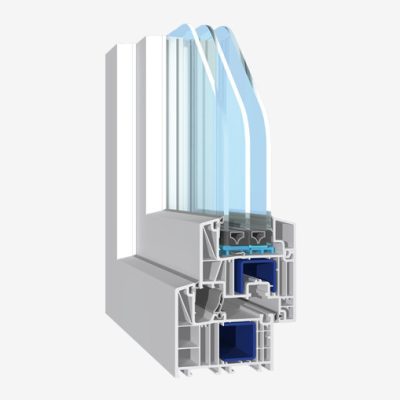The air around us, regardless of temperature, always contains a certain amount of water in the form of water vapor. However, the warmer the air, the more water it can absorb. The phenomenon of windows fogging on the inside or outside is a natural and inevitable process, and depends on the differences in the temperatures of the window surface and the surrounding air and humidity.
Causes of fogged windows
Water vapor condensation on windows is a natural physical phenomenon, which consists in the fact that as a result of contact between moist and warm air with a surface at a lower temperature, it cools to a saturation state, and the moisture contained in it condenses. We cannot prevent windows from fogging at all, but we can delay this process or even control it to some extent through appropriate air exchange in the rooms, additional dehumidification or the use of windows with a heat transfer coefficient that ensures a higher glass surface temperature during cold weather. While these are natural laws of physics and there is no way to defeat them, it is worth taking a closer look at this phenomenon, as they not only affect the comfort of our homes and apartments, but can sometimes significantly affect our health.
Read also:
A FEW WORDS ABOUT PVC TECHNOLOGY
Fogging of glass on the outside
The evaporation of windows from the outside, which we most often observe in spring and autumn, is caused by higher air humidity, as well as greater temperature differences in the room and outside. This phenomenon occurs especially with windows with a low heat transfer coefficient Ug. This happens because the window with good thermal insulation parameters does not heat up on the outside, and as a result of the temperature difference, water vapor settles on its outside. This phenomenon may occur periodically and should not cause us concern.
Window steaming up from the inside
Window steaming upfrom the inside of the room is also not a defect of the windows. It is rather evidence of the high tightness of the window. The cause of this phenomenon should be sought in excessive air humidity inside the house and insufficient ventilation in the room (insufficient air exchange). The appearance of such a symptom is a warning for us. Too high air humidity can have a harmful effect on our health, because it promotes the appearance of fungi and mold. So are there ways to combat steamed up windows from the inside? Of course, yes:
- Check whether the ventilation of the rooms is working properly, whether the ventilation ducts are not blocked, etc.
- The next step is regular airing, regardless of the season.
- Using a window with a vent or micro-ventilation often helps to alleviate the phenomenon.
- We can also use air dehumidifiers
Condensation of water vapor between panes
The appearance of condensed water vapor on the inner surface of the insulating glass is a sign of a more serious problem, than steamed-up windows from the outside or inside the room. This is usually caused by the leakage of the space between the panes. If the phenomenon occurs in new windows, it is a sign of a defect in the insulating glass unit. It also happens that after a longer use of the window, the noble gas from the space between the panes has escaped and been replaced by atmospheric air. The gradual loss of gas from the space between the panes is a symptom of natural wear and tear, as provided for in Polish Standards. Regardless of the cause, in such a situation, there is nothing left for us to do but replace the faulty insulating glass unit.
Read also:



